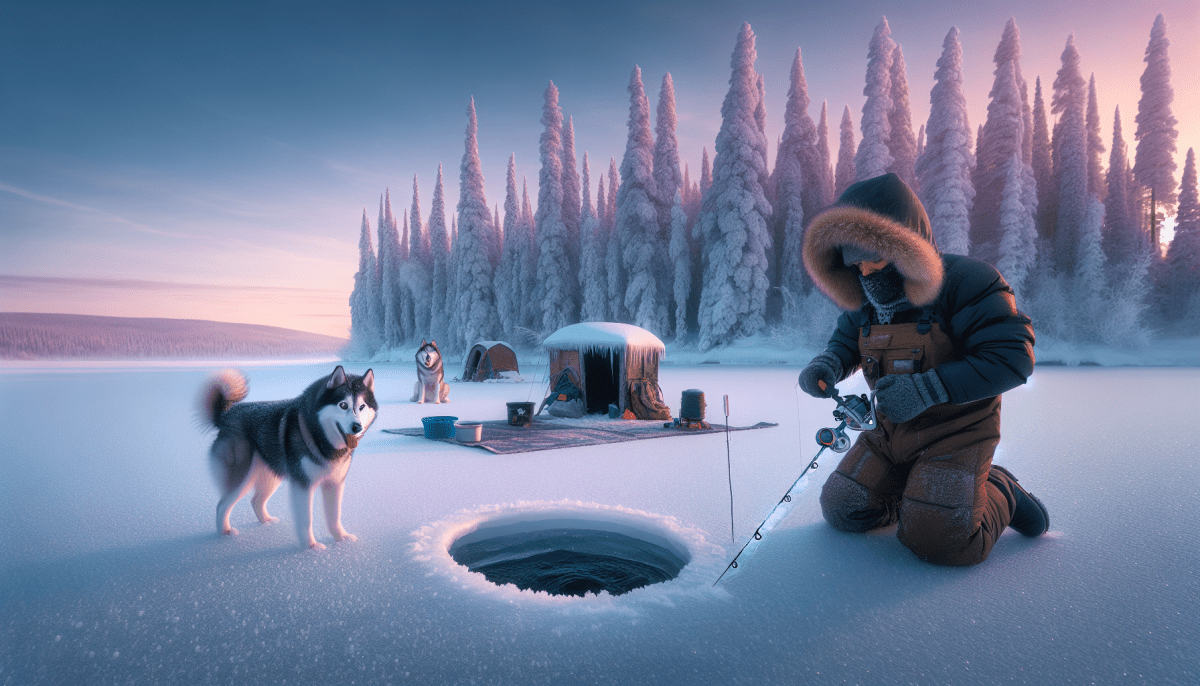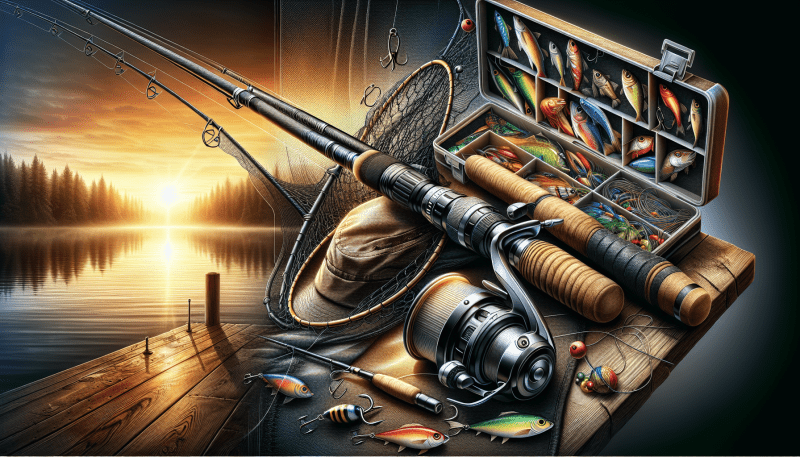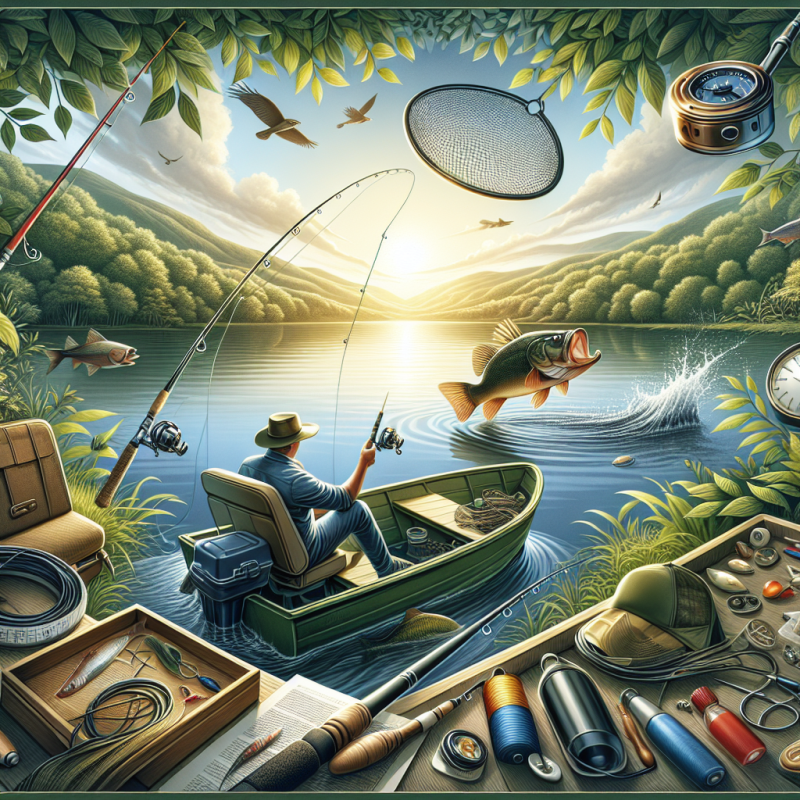Ice fishing is an exciting winter activity that allows anglers to enjoy their favorite pastime even when the lakes are frozen. To make the most of your experience, having the right gear is essential. Here’s a look at some must-have equipment for a successful day on the ice.
First and foremost, a sturdy ice auger is vital. This tool is used to drill holes through the thick ice to access the water below. You can choose between a hand auger or a powered one, depending on your preference and how often you plan to fish. Make sure to consider the thickness of the ice in your area when selecting your auger.
Next, proper clothing is crucial for staying warm and comfortable during your ice fishing trip. Layering is key! Start with thermal undergarments, add an insulating layer like fleece, and finish off with a waterproof and windproof outer layer. Don’t forget insulated boots, gloves, and a warm hat to keep your extremities cozy.
In addition to these essentials, a good ice fishing rod and reel combo tailored for cold weather is important. Look for lightweight rods that can handle the smaller lures used in ice fishing. Tip-ups are another excellent choice for fishing while you relax or socialize. They allow you to catch fish without having to constantly monitor your line.
Finally, don't forget about safety gear. Ice cleats for your boots can help prevent slipping on the icy surface, while a personal flotation device is recommended if you're fishing on unfamiliar waters. Additionally, a sled or portable fish house can make transporting your gear much easier and provide a comfortable spot to enjoy the day.
Choosing the Right Location
Start by researching local lakes and rivers that are popular for ice fishing. Look for bodies of water that are well-stocked with fish, such as trout, perch, or walleye. Talk to local anglers or visit bait shops to gather intel on the hottest spots. Online forums and social media groups can also be helpful for finding tips and recommendations from experienced ice fishers.
Once you've identified a promising location, consider the specific features of the area. Fish tend to gather near structures like submerged rocks, drop-offs, and weed beds. Additionally, look for natural funnels or points where fish may travel. These features can create ideal conditions for ice fishing, increasing your chances of making a catch.
Lastly, always factor in safety when choosing a fishing spot. Ensure the ice is thick enough to support your weight, typically at least four inches for walking. Check local conditions and regulations, as some areas may have specific rules about fishing or ice thickness. Taking these precautions will help you enjoy a safe and successful ice fishing adventure.
Perfecting Your Fishing Technique
Next, focus on your bait choices. Live bait, such as minnows, wax worms, or maggots, can attract various species of fish. However, artificial lures can also be effective. Experiment with different colors, sizes, and types until you find what works best for the conditions you're fishing in. Remember, fish can be very particular about what they bite, so don’t hesitate to change things up.
Another key aspect of perfecting your technique is your presentation. When lowering your bait into the water, take your time. Allow it to descend to the desired depth slowly. Once it’s in position, give it some motion to mimic the natural behavior of the bait. This movement can entice a curious fish to bite. Pay attention to your surroundings and watch for any signs of activity under the ice, such as holes made by fish or shifts in the water column.
Lastly, don’t underestimate the importance of patience and observation. Spend time watching your surroundings and learn from your experiences on the ice. Keeping a fishing journal can help you track your successes and challenges, allowing you to adjust your techniques in the future. With practice and a willingness to adapt, you’ll be on your way to mastering the art of ice fishing.
Safety Tips for Ice Fishing
Ice fishing can be an exciting and rewarding experience, but safety should always come first. Before you head out onto the ice, make sure to check the thickness. A safe ice thickness is generally considered to be at least 4 inches for walking, and 5-7 inches for snowmobiles or small vehicles. Always trust your instincts—if the ice looks questionable, it's better to stay off it.
Dress appropriately for the cold weather. Layering is key; wear thermal underwear, insulated pants, and a warm jacket. Don't forget a hat, gloves, and waterproof boots to keep your extremities warm and dry. Consider wearing a life jacket or a floating suit, especially if you're fishing in areas where the ice might be thin.
When setting up your ice fishing equipment, always fish with a buddy if possible. This way, someone is there to help in an emergency. Keep a safety kit handy, including a throw rope, ice picks, and a first-aid kit. Familiarize yourself with the signs of hypothermia and frostbite so you can recognize them early.
Lastly, be mindful of the weather and changing conditions. Sudden temperature shifts can affect ice safety, making it weaker. Always have a means of communication on you, like a cell phone, to call for help if needed. Stay informed and enjoy your time out on the ice while being safe!



